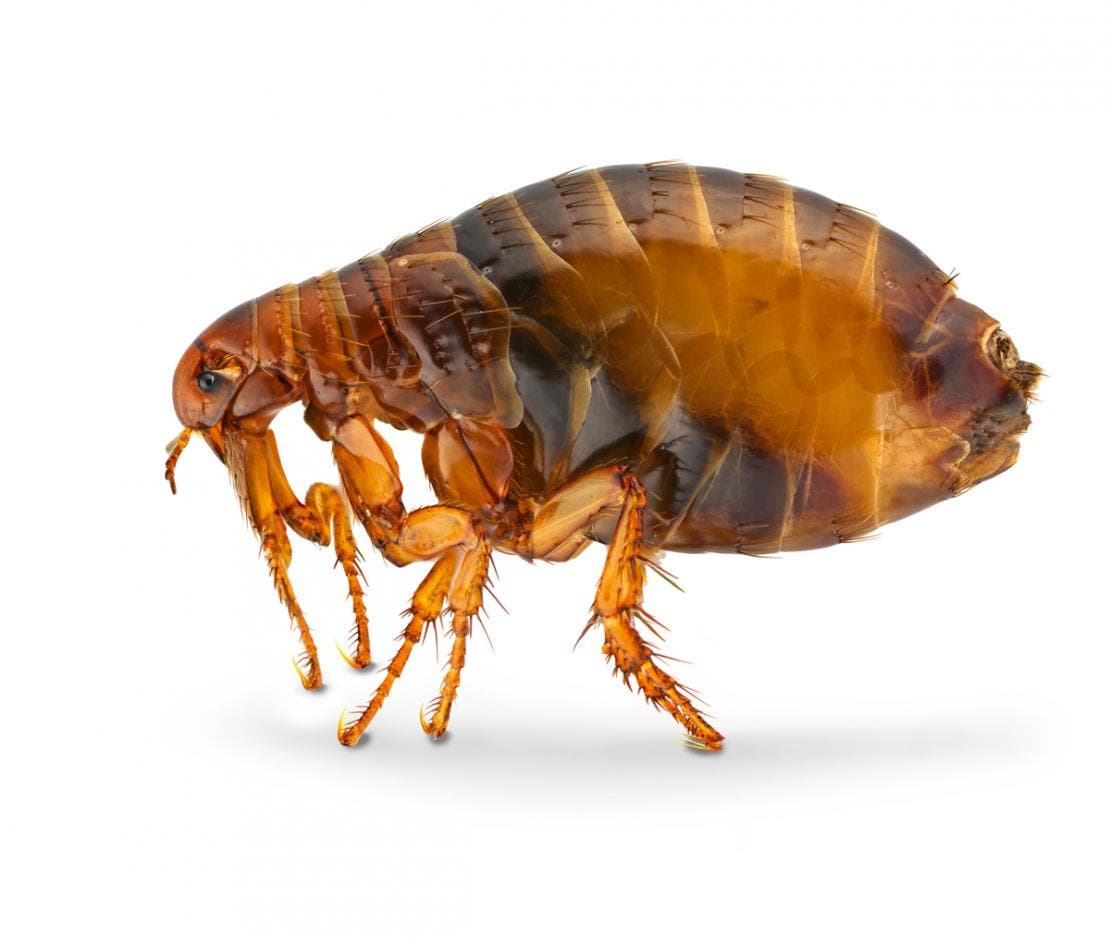Dogs often love a good scratch but if your four-legged friend is scratching a lot he may have some six-legged friends living on him. Get to know your enemy before they get to know you…
What are fleas?
Fleas love dogs but the feeling definitely isn’t mutual. These parasites jump on your pet and stay alive by sucking its blood, your pet may be bitten hundreds of times a day by a single flea! Flea bites can trigger Flea Allergy Dermatitis (FAD) – an allergic reaction to flea saliva – that irritates the skin and can cause intense itching in your dog. Fleas aren’t just irritating though – they can transmit tapeworm if an infected flea is swallowed, and can even pass disease on to pets when they bite. In one study 50% of fleas were found to be carrying at least one bacterial disease.1 They also bite humans, leaving a red spot that’s incredibly itchy. Fleas can lay around 2,000 eggs in their lifetime, jump around 66 times their own height and withstand a force of 100Gs (more than ten times that of a fighter jet). In short, you don’t want fleas and neither does your dog.
What do dog fleas look like?
There are some 2,000 varieties of flea in the world but the most common flea found on dogs is actually the cat flea. Cat and dog fleas are only a few millimetres long. They appear brown/black in colour but are difficult to spot because they like to bury deep into the fur. It’s actually easier to check for flea droppings, which you might see in your pet’s coat or on his bedding as tiny black specks. Brush them with a bit of damp white paper and they turn reddish brown. A disconcerting fact about fleas is that only about 5% of them live on your pet. The other 95% are likely to be scattered around your house in their immature stages, usually hiding in areas such as carpets and upholstery. Once a home is infested, flea pupae can survive for many months, with new fleas emerging at any time.

The life of a flea
The life cycle of a flea begins with tiny small white eggs laid by the female flea in your dog’s coat. These fall off your pet as it moves around and hatch into flea larvae usually within a few days. These larvae scoot off into corners of your house, surviving on flea droppings and dead skin cells. They then enter a pupal state, spinning cocoons around themselves inside which they develop into adult fleas. Inside the cocoon the fleas are protected until the conditions are right for them to hatch – laying dormant anywhere from a week right up to a year or more. The whole cycle can be complete within a few weeks if conditions are right, and with our centrally heated homes fleas can now be a problem year round.
What can you do about fleas?
Fortunately there are many effective treatments available that mean you will hopefully never have to remember any of these horrible facts. Find out more about flea treatment and prevention by clicking the link below.

Did you know…
Rats get a bad rap for spreading diseases, but in some cases fleas are the real culprits, transmitting disease from infected rats to humans.
Find out more about Advantage spot-on treatment here.
1 Shaw SE, Kenny MJ, Tasker S, Birtles RJ, Vet. Microbiol. 2004 Sep 8;102(3-4):183-8. Pathogen carriage by the cat flea Ctenocephalides felis (Bouché) in the United Kingdom.
